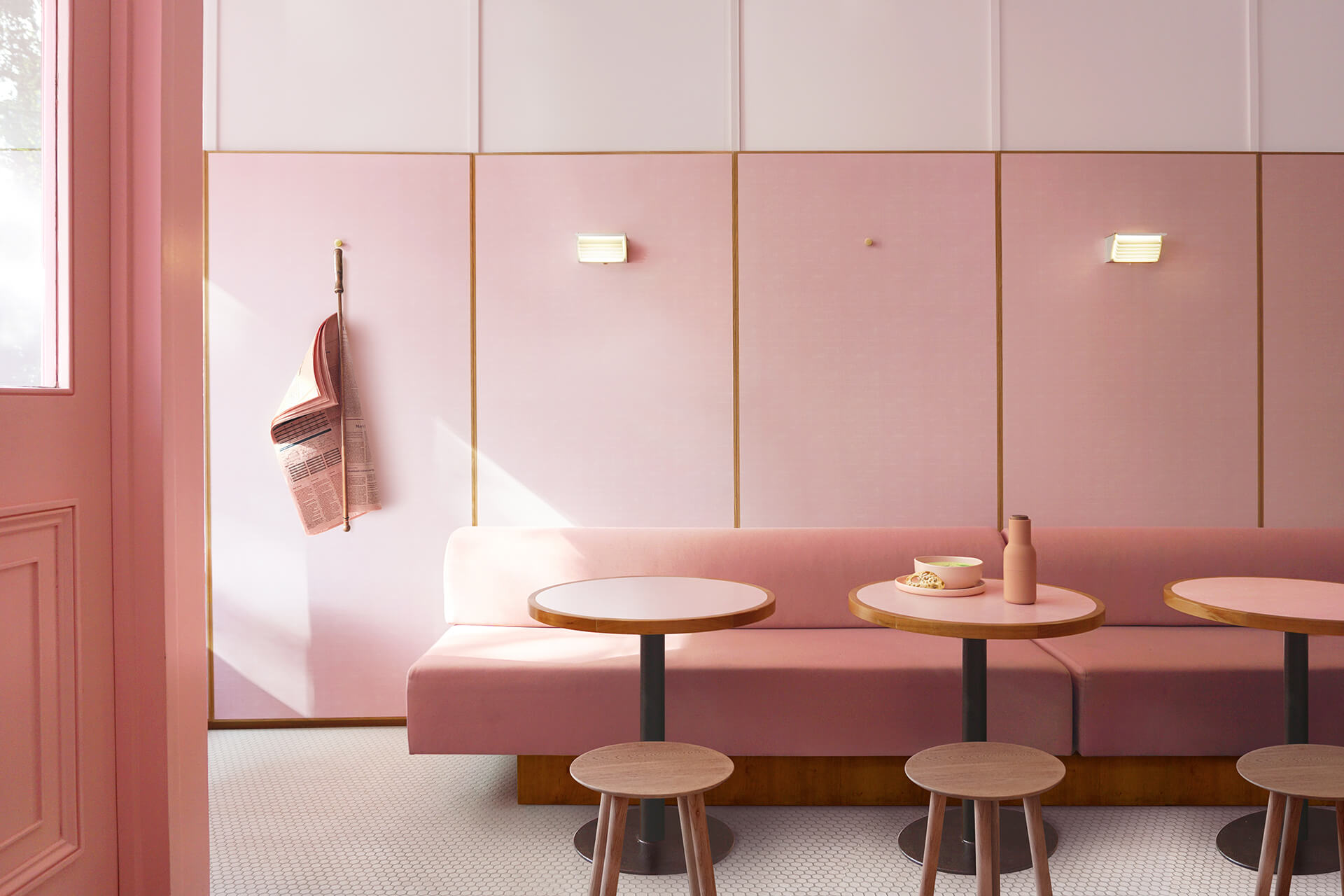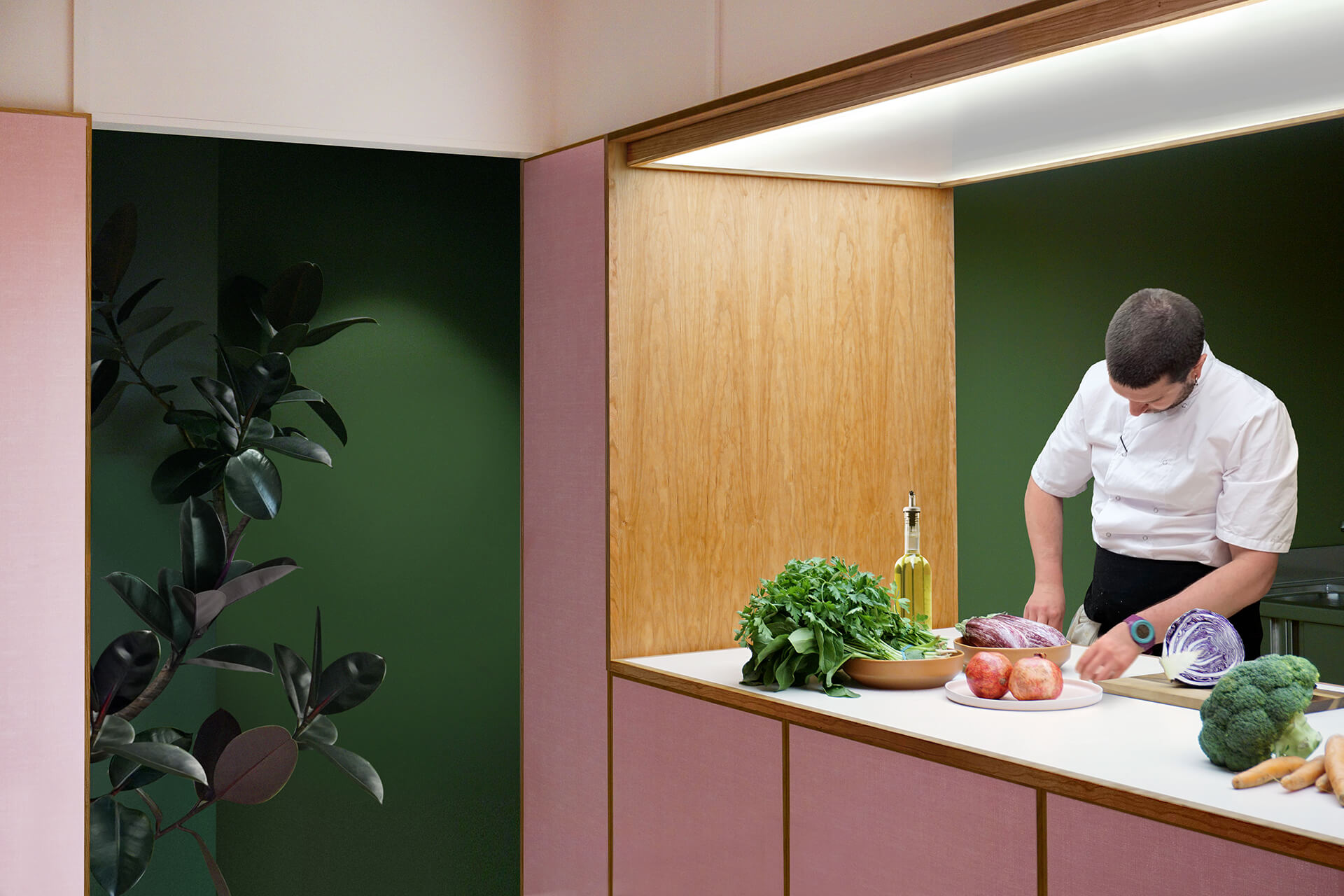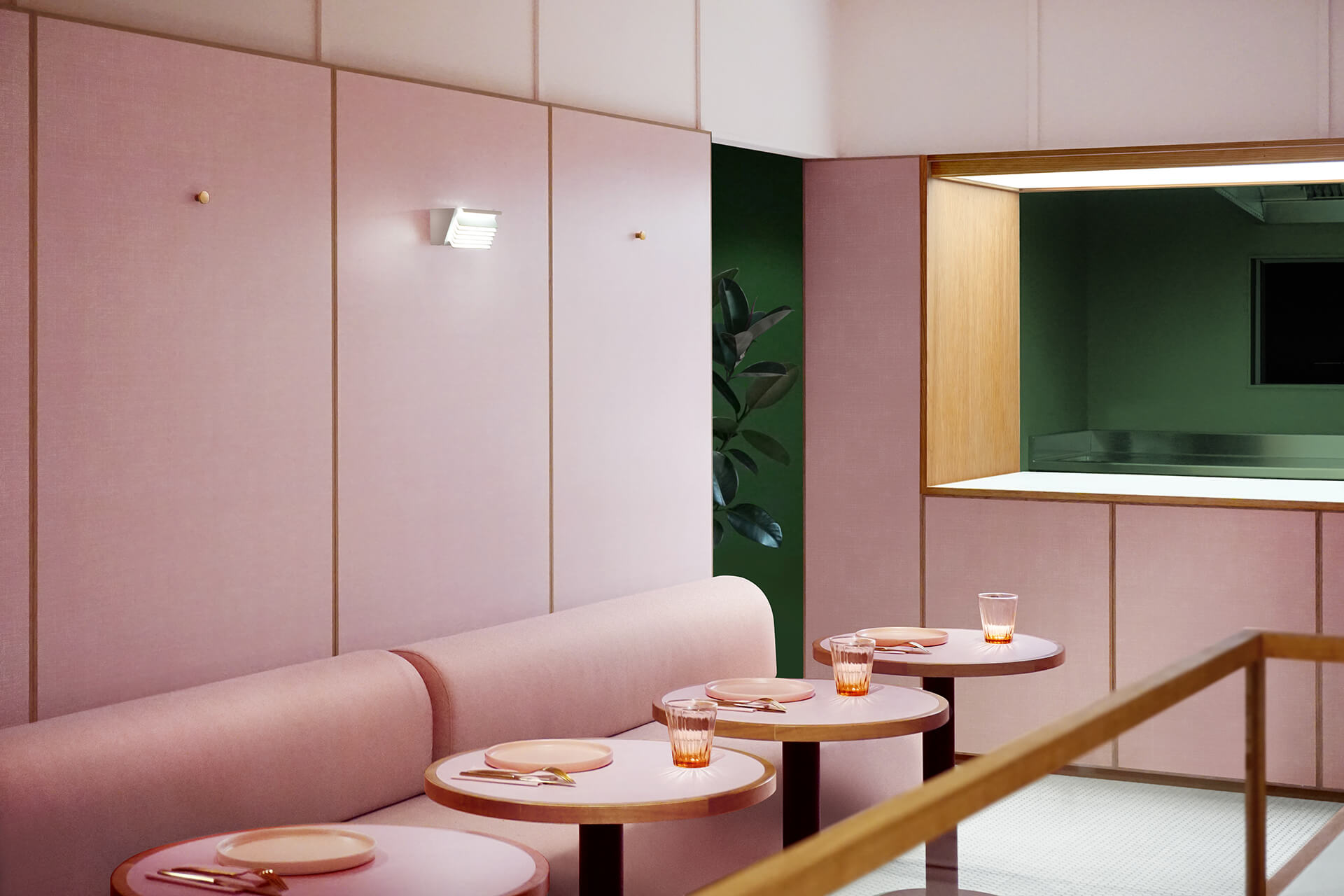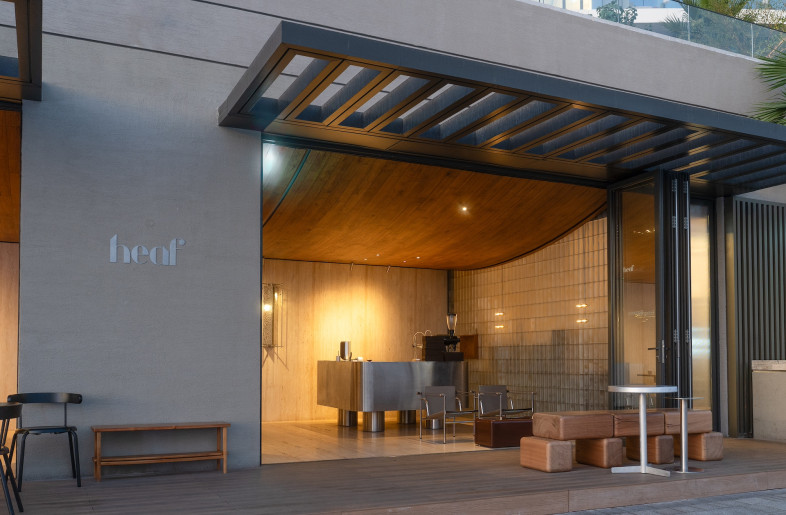As a decorative surfacing material – especially in residential interiors – Formica today has something of a bad reputation. But for all intents and purposes, it, being easy to clean and replace, remains indispensable and practical for hospitality spots everywhere. It’s a perfect material especially for, say, pizza restaurants – where it’s almost scientifically impossible to leave with entirely clean hands or white t-shirts.
Humble Pizza is a new eatery in London dedicated to plant-based pies. Designed by the locally based Child Studio, it looks straight out of The Grand Budapest Hotel. It’s that pink, accented by hunter green that pops through the back of house and finds its visual partner in well-watered rubber plants in the dining area. Looking in from afar, it seems completely unreasonable: Pizza? In here? The poor staff will be cleaning up for hours.



But Child Studio knew their design deck, and played a little trick. To achieve such aesthetic freedom – where a more unthreatening cuisine might be served expectedly, but pizza certainly not – they got wise to Formica. Clad wall-to-wall and counter-to-table in it, the interior was inspired by post-war cafés nicknamed after the material, hot spots during that time in London’s West End. The designers worked with the Formica factory in Northeast England to recreate the original linen-like pattern that was popular in the 70s.


Other period references are present, such as mid-century lighting fixtures from Poul Henningsen, Jacques Biny and Luigi Massoni. There’s white mosaic tiled flooring and cherry wood features – one of which is a lightbox framing the open kitchen like a cinematic focal point.
So, the next time your eye is hindered by the rationality for a space’s end function, remember this case. Fight practicality with, well, practicality – re-thinking classic materials may render a vision more feasible.










